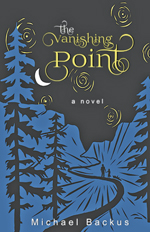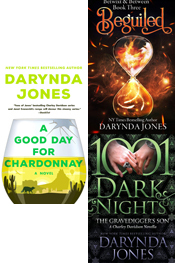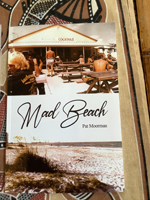Michael Backus is a fiction and nonfiction author who teaches online writing courses for Zoetrope Fiction and Gotham Writers. His newest release, The Vanishing Point (Cactus Moon Publications, 2021), has been called “lyrical and stunning…readable and relatable. Subtly masterful without showing off…Utterly absorbing, it works along that interesting line that marries plot and artistry.” You’ll find Mike on his website MichaelJBackus.com and on Facebook and Twitter. For more about his work, read SWW’s 2017 interview and watch a book reading from The Vanishing Point.
 What would you like readers to know about the story you tell in The Vanishing Point?
What would you like readers to know about the story you tell in The Vanishing Point?
In the most basic way, it’s a book about trauma; about how a 10-year-old boy went through a tragic event that splintered and destroyed his family and how he as an adult visited this trauma on his own child, though in a much different way (he essentially abandons his daughter when she’s two). But it’s also about how easy it is for someone to drift away from all human contact (hence the title, The Vanishing Point, referring to that dynamic when some people seem to just disappear from everyone and everything they know) and how difficult it can be to come back from that. I think of my main character Henry as a moral character who in his 40s has found himself stranded in a New Hampshire town where he knows no one and he seems content to essentially find a corner of the world and wait to die.
Then through a series of circumstances, he finds himself in Santa Fe, New Mexico where he abandoned his child Cadence eight years before and slowly and haltingly, he gets to know her. So it’s also a redemption story of sorts and not just with his daughter but with his mother, who is a sad, alcoholic geriatric still living in the town where Henry grew up.
What unique challenges did this work pose for you?
At one point, this book was over 700 polished pages long! It was ridiculous. I always remember showing it to an agent in NYC and she liked the writing but said “it just keeps going on and on.” So my own verbosity was something of a challenge. But I also ended up with a lot of plotting problems. I’ve been teaching creative writing (at the college level and for a place called Gotham Writer’s Workshop out of NYC) for over 20 years, and I’ve often talked about the idea of “writing as an act of discovery.” That you figure out who your characters are and where the story is going AS you write. And I wrote this book that way, but when I finally reduced it to more or less its current length, I hit a lot of plotting problems with two timeline narratives (a past narrative with Henry as a child and the present narrative with Henry as a lost 40 year old) because I never planned for that past/present back and forth. I spent so much time making sure the chapters fit together and that a past chapter flowed into a present chapter and the juxtaposition of past and present carried some meaning of its own. This was not easy. On a practical level, I simply didn’t have enough “past” material to balance out the “present.” This caused me a lot of grief and, if I’m honest, I still don’t think it’s as good as it could have been had I planned the structure of the novel a bit more beforehand. My larger point is when you’re writing a novel, I think it makes some sense to figure out who your characters are as you write, but it can be helpful to have a little clearer, more laid out sense of the book’s plot.
How did the book come together?
Originally, I had this (quite possibly idiotic) idea of writing a story about a man who has abandoned his child, ends up meeting her and makes a moral decision not to be part of her life, a decision the readers would ultimately agree with. That went away once I started writing from 10-year-old Cadence’s POV. She was such a lively child (I felt freed up writing from a child’s POV) that halfway in, I realized there was no way I could have Henry just take off again. So the book became about something different, about a grown man pushing aside his own past and finding a way to be there for his daughter and also, by the end, his mother.
It took me maybe two years to write this, edit it, cut it in half, etc., but for ten years, I struggled to do anything with it. I have a lot of minor connections in the literary world and got this to a number of high-powered agents, all of whom turned it down. I had an agent for a micro-second after the short story magazine One Story published something of mine, but he never loved the book or the life and he quit the agency and while he passed the book onto his boss, the boss was not interested. So for years, I just let it be until I found Cactus Moon, a small publisher out of Arizona, willing to publish it.
Tell us about your main protagonists. Did they surprise you as you wrote their story?
Like I said, I knew I wanted to get Henry and his daughter together at some point, but I was surprised at how well Cadence came out as a character once I decided to write from her POV and once I’d started writing her chapters, I knew there was no way I could have Henry take off and leave her a second time. Cadence was just too lively to abandon a second time. Oddly, a lot of Cadence came indirectly from my mother. I have this photo of my mother when she’s 12 (she looks ferocious, determined, and sad) and by then, both her parents had died (in rural Kentucky in the 30s) and she was cast adrift into a world of despotic foster families and periodic stays in an orphanage. And in her diaries, she wrote about meeting her bus driver as an adult who said her and her sister were “the two fighting-est kids he ever met.” So I took that photo and that memory and fashioned a far less traumatic backstory for Cadence, but her general prickliness remained and that’s how Cadence’s character developed.
 I also wrote a short story around the same time imagining the night my mother’s mother died from TB and there’s a lot of Cadence in that character. This story was published as a stand-alone chapbook, Coney on the Moon, a few years ago. (**See note on this at the end of the interview.)
I also wrote a short story around the same time imagining the night my mother’s mother died from TB and there’s a lot of Cadence in that character. This story was published as a stand-alone chapbook, Coney on the Moon, a few years ago. (**See note on this at the end of the interview.)
While writing, I realized I needed to add something for Henry. This is a guy who had a bad relationship with his wife (Cadence’s mother, who is long out of the picture — Cadence is being raised by her maternal grandparents in Eldorado outside Santa Fe) and had abandoned his own child. I needed there to be some hiccup in the process of getting to know his daughter, something that hints at a personality able to do what he did. So I added an old friend of Henry’s who has a wife and Henry kind of pursues her romantically for a while as a way to not have to deal with his daughter This added a lot to the story and is something I only realized I needed after the early drafts were done.
One last thing. At one time, I called this book Double. Henry’s central trauma is he was a twin who lost his beloved brother to a freak accident when he was 10. That’s the incident that splintered the family. So in revision, I developed this idea that Henry as a young man was obsessed with reincarnation and decided he’d just wait until his brother is reborn somewhere in the world. But by the time the book begins, he hasn’t thought about his brother or reincarnation in decades. At some point in getting to know Cadence, he gets an idea and, as he puts it, you can’t “unthink a thought” once you’ve had it, that thought being that Cadence might be the reincarnated soul of his long-dead brother. The book never takes a position on this, it remains in Henry’s head (which is why I quit using that title, it’s not a major part of the book, more a character shading) but it adds nuance to Henry’s character.
How did you know you had taken the manuscript as far as it could go, that it was finished and ready for publishing?
At some point, I just had to admit, this is as good as I’m capable of doing at this time. When Cactus Moon accepted the book, I did a tightening revision where I lost seven whole pages simply by excising unnecessary words and phrases. I didn’t change anything fundamental about the story but I made it tighter. That was gratifying. That said, since I’ve published this, I’ve had to do a number of readings and I wish I’d been more ruthless in cutting. This is still a wordy book and even when I’m happy about the music of the writing, I see places all the time I wish I’d cut back.
What was your favorite part of putting this project together?
Besides the writing, I really enjoyed working on the cover. I wasn’t that happy with what Cactus Moon suggested for covers so I got an idea, hired an artist, and along with my literary brain trust (essentially my sister and her partner, both writers and excellent editors), shepherded the creation of the cover. I was thrilled with how it came out.
Is there something that always inspires you or triggers your creativity?
Reading. Here’s an article I published in The Writer magazine many years ago about what reading the right thing can do for your writing. There’s nothing like a book or story that wows me to get me wanting to write and often it’s not the entire story, but a scene or moment that depicts something I recognize (an emotional dynamic for example) but have never seen described that way before. I go into that specifically in the article “The Trick of Reading the Right Thing While Writing.”
Do you prefer the creating or editing aspect of writing?
I’m a firm believer that the art of a story or a novel comes in revision. This is NOT how everyone works or should work (I always remember going to a reading by Joy Williams, who is an amazing writer, in the early 90s and she claimed she doesn’t revise at all. That she thinks about a story constantly for about a month and then writes it and when she’s done, it’s done.), but it is how a lot of us work. Get a first draft down any way you can by pushing through it and not stopping, THEN step back, see what you have and start adding details and nuance in the revision phase, which lasts much longer than the first draft phase.
What writing projects are you working on now?
A couple of years ago, I finished a book-length memoir about living in NYC’s Lower East Side in the early 80s in general (a time when the city was vibrant, full of art and artists, and much much scarier than it is now) and working in the Gansevoort Meatpacking district specifically. In the early 80s, New York City’s Gansevoort Meatpacking District, a small irregular patch of the West Village, was a wild confluence of meat market workers, gay men hitting the S&M clubs The Mineshaft and The Anvil, transgendered prostitutes, homeless huddled around burn barrels, New Jersey mafiosos, veterans of three wars, heroes of the French Resistance, and Holocaust survivors. It was a lively, insane world so long gone, it’s hard to believe it ever existed. The Meatpacking district in Manhattan today is a landscape of high end restaurants, shops, the new Whitney Museum, and the High Line elevated park. I’ve sent this book to a lot of people, both agents and publishers, and it remains stubbornly unrepresented and unpublished, though I feel it has some of my best writing.
I’ve started a new novel, but it seems way too early to talk about it, otherwise I’m like that person at a party going on about a book (or screenplay) they want to write but have barely started. No one wants to hear about that.
Is there anything else you’d like readers to know?
**Earlier in this interview when I wrote about publishing a story with Redbird Chapbooks, I mentioned a note. This is it. When I first sent that story to Redbird (it’s called “Coney on the Moon”), I entered it in an Excel spreadsheet I’ve kept for 20 years detailing everything I’ve submitted and when I went to type in “Redbird” it filled in! So I looked and sure enough, I’d sent this exact story to Redbird a year before and had been rejected. I contacted the editor right away and apologized and said I’d withdraw it. She wrote back and said did I want to withdraw it? This was a different editor and I could just leave it, so I did. And they took it! The moral of the story is acceptance of publication is often a matter of timing and chance. The same story was rejected by the same publication but then a different editor took it. Good to keep this in mind when submitting.
 KL Wagoner (writing as Cate Macabe) is the author of This New Mountain: a memoir of AJ Jackson, private investigator, repossessor, and grandmother. Kathy has a new speculative fiction blog at klwagoner.com and writes about memoir at ThisNewMountain.com.
KL Wagoner (writing as Cate Macabe) is the author of This New Mountain: a memoir of AJ Jackson, private investigator, repossessor, and grandmother. Kathy has a new speculative fiction blog at klwagoner.com and writes about memoir at ThisNewMountain.com.






